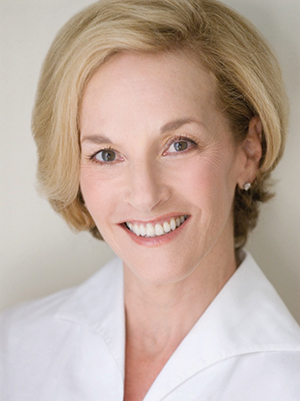
Judith Kelman says writing can empower cancer patients. Photo courtesy of Judith Kelman
Many cancer patients have found relief from fear, anxiety and anger through a simple practice called expressive writing, in which they write about their deepest thoughts and feelings or document their experience.
Award-winning author Judith Kelman sees firsthand how writing can empower cancer patients. In 2008, Kelman founded the Visible Ink writing program at Memorial Sloan Kettering Cancer Center (MSKCC) in New York City, where her husband, prostate cancer surgeon Peter T. Scardino, is the chair of the department of surgery.
Kelman, who has written 17 novels, three nonfiction books, dozens of short stories and hundreds of articles and essays, recently spoke with Cancer Today about the remarkable transformations she has seen in cancer patients when they express themselves through writing.
CT: Why did you develop a writing program for cancer patients?
KELMAN: When I was 17, my friend Stephen became very ill with terminal cancer. I visited him daily for six months. It was obvious what was happening, but it struck me that no one used the word “cancer” as we watched a 6-foot-4-inch, strapping basketball player waste away to about 65 pounds. The tragedy of his death was so much worse because his voice was silenced. In retrospect, I think Stephen’s death planted in my mind the notion that people with serious illness, and certainly people going through a cancer experience, should have a full voice. So when I learned about MSKCC and realized that they didn’t have a writing program, I thought ‘Why don’t I start one?’
CT: How does the program work?
KELMAN: The program is supported by grants and donations and is open to any patient at MSKCC. We pair a patient with a volunteer mentor who provides individual support to the participant. We have about 150 mentors who are writers, editors or teachers, including New York Times best-selling authors, prolific writers for screen and television, and world-renowned poets. The patient and mentor decide what they’re going to work on and when and how they’ll meet. Patients can work on whatever they want—whether it’s about their illness or not. They can stay in the program for as long as they want and complete as many projects as they’d like.
More than 1,000 patients representing all disease stages and ranging in age from 7 to 95 have participated since the program began. We work with people of all writing and literacy levels, including those who have never before attempted to write anything on their own. There are also group programs for caregivers and people healing from loss.
CT: What kinds of works are people writing?
KELMAN: The level of creativity is amazing. Some works are funny; others are emotional or heartwarming. Participants have created more than 45,000 pages of written work, including memoirs, nonfiction books, novels, essays, journals, poetry, letters, stage and screenplays, song lyrics, rap songs and blogs. Some of our participants have also had their works published in print or online.
We honor and celebrate our participants each year by inviting them to submit written works for potential publication in our annual anthology or inclusion in our annual staged reading event that features actors, singers and dancers from television, film and the Broadway stage. Both the anthology and the event are extraordinary.
CT: How can writing help cancer patients?
KELMAN: Cancer patients face their mortality in different ways, and that makes it that much more critical to have their voices witnessed, heard, accepted and honored. I’ve been told by cancer patients that their diagnosis shattered their personal narrative and altered how they expected their lives to unfold. Writing helps patients reconstruct their personal narrative in a way that incorporates their cancer experience.
Visible Ink participants say the program provides positive distraction and fosters personal growth. Writing also helps reduce patients’ stress by helping them get through what they’re experiencing moment by moment. Participants tell me that writing provides them with a piece of the healing process and gives them a sense of permanence. It’s also very powerful when they realize how their stories help other cancer survivors. Over time, they can look back and see how far they’ve come and the progress they’ve made along their journey.
Write Your Own Story
Here are resources to get you started with writing.
You don’t have to participate in a formal program to benefit from writing about your feelings, thoughts and experiences. Here are some resources to help you get started:
CancerCare offers Healing With Words, an online therapeutic writing group for people in treatment or who have completed treatment in the last two years. Offered three times a year, each group session lasts 15 weeks.
Writing Through Cancer offers guidance and weekly prompts for writing about the cancer experience.
Penzu and Journalate allow patients and survivors to create free online diaries or journals.
CT: What tips do you have for people who want to write their own story but don’t have a program like Visible Ink near them?
KELMAN: I encourage people to develop the habit of writing. They can start journaling or blogging or write in a document on their computer. I recommend that people pick a special place and time to write, and that they limit their writing to three to four minutes. I encourage people to use writing prompts so they can get in the flow of writing. It’s really important that people write freely and not censor themselves.
Cancer Today magazine is free to cancer patients, survivors and caregivers who live in the U.S. Subscribe here to receive four issues per year.




